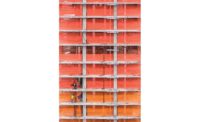...equipment. One of my shipments sat at the port for six months. The government official saw my big equipment, and he said he just bought a piece of land and needed to use the machine. Being [myself], I told him, “You can keep it. When you’re ready to give it to me, let me know.” I eventually got the call to come pick up my equipment.
If you want to go that route, it can take months. Or you can pay the bribes and keep moving. People who have government contracts often want 25%.
Were you worried you wouldn’t get back your equipment?
Oh yeah, I was worried. It was a couple hundred thousands dollars’ worth of stuff. But if you believe in something and want to make a change, you have to hold your ground.
In addition to corruption, what are some of the others challenges of working in Haiti?
Safety is an issue. Workers will show up at a jobsite wearing sandals. I try to talk to them about safety, why they need to wear a helmet and boots. It costs money to get that stuff, though. Sometimes, I’m able to give them the basics, like T-shirts and shoes.
Are Haitian workers skilled?
Not really. Here in the office, for instance, I’m doing a little sheetrock work. I literally had to show them how to hold a screw gun and explain why we have to install studs.
Sheetrock is a novelty here. Most construction is concrete block and poured concrete. They’re excellent at that stuff, but I’m trying to show them best practices. It’s rare that I see a plumb wall in Haiti. There’s a lack of tools and a lack of eye to know that a wall is not straight. It’s a whole education process, and with my background in running construction projects, I’m able to do that.
How many projects do you have on the boards right now?
We recently completed eight projects. We’re hoping to sign contracts within the next six months. We’re looking for a few architecture projects, a couple homes. And we’re renovating the office building where I work.
In Haiti, design fees are so low, you have to be able to do both design and construction. Most of the firms here are design-build—I would say 90%, based on [my] exposure … to local architects.
How many architects are there in Haiti?
We hosted a meeting with Architecture for Humanity and Habitat for Humanity, and there were about 35 people there—some students, some professionals. My guess is there are 50 to 60 practicing architects in Haiti, and 25% were educated abroad.
Are there architecture schools?
There are a few schools. All of them collapsed [in the earthquake] and are operating out of a tent.
I have a couple of students working with me now. To my surprise, they are very, very good. I thought the education system here was archaic, but they really know their stuff. They are very computer-literate; they know AutoCad, SketchUp. They need to learn 3D Studio and Rhino, [to] which I’m introducing them with the help of Architecture for Humanity.
How much does it cost to attend architecture school in Haiti?
It’s around $1,000 to $2,000 per semester. Most students come from families that can afford it. It’s a five-year B.Arch program.
Are there graduate-level programs?
No, most of them go abroad for additional education. They go abroad and don’t come back. I’m pretty unusual—and crazy. Go in front of the U.S. Embassy [in Port-au-Prince] and see how long the lines are. That’s the dream: to pack up and go.
Are Haitians ready and willing to rebuild?
Absolutely. The sad part is, I’m starting to see signs that a lot of the work is going to non-Haitians. The Dominican Republic is getting a lot of contracts now. When I submit a proposal now, I’m competing with Dominican firms working in Haiti. I hope it’s a temporary thing.
But you’re an American …
But most of my employees are local people. They don’t have good skill sets, so it costs me a little more, but the...


Post a comment to this article
Report Abusive Comment